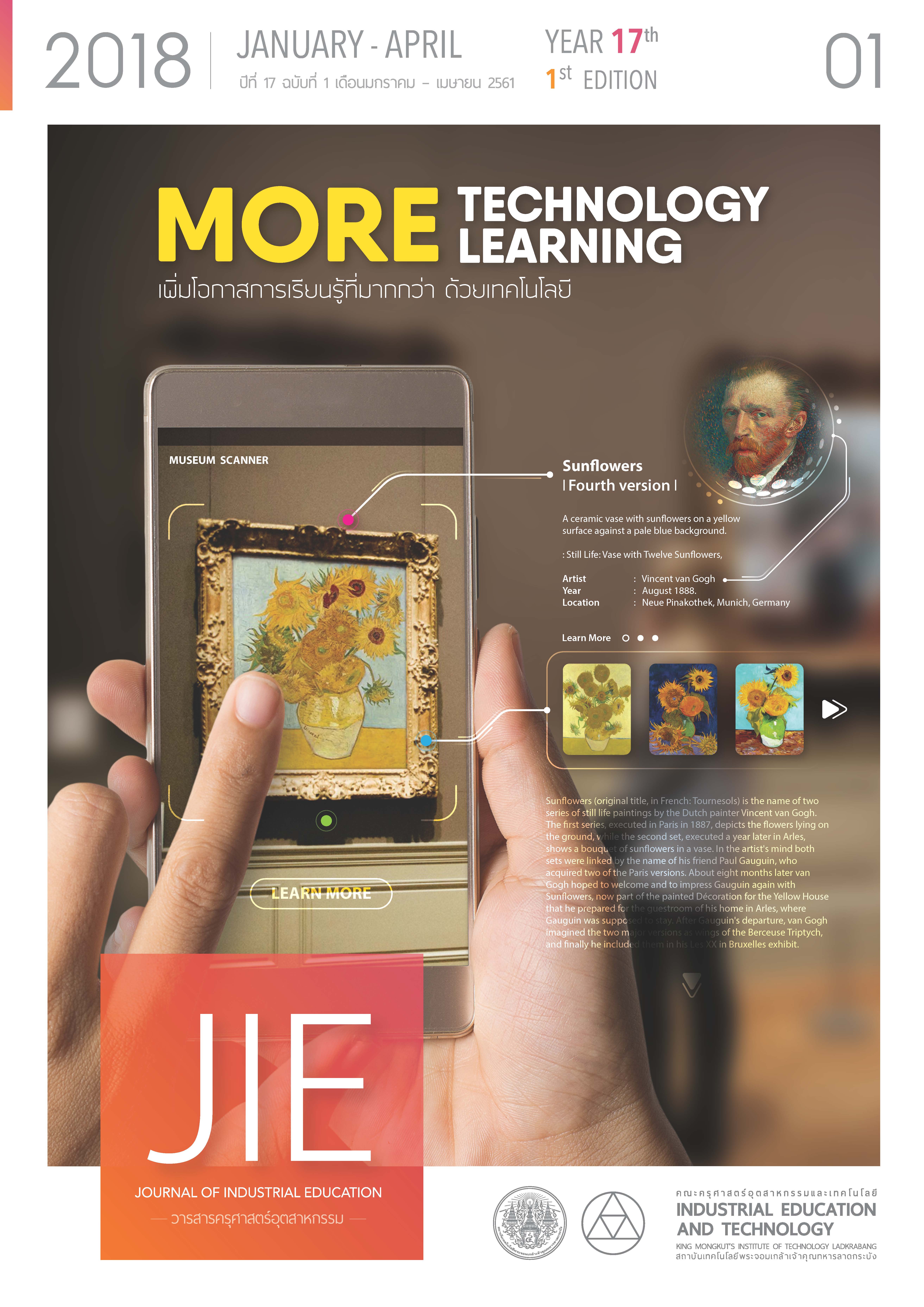การพัฒนาหลักสูตรฝึกอบรมเพื่อพัฒนาสมรรถนะการเป็นผู้ประกอบการธุรกิจเริ่มใหม่ เชิงสร้างสรรค์และนวัตกรรม สำหรับนักศึกษาระดับปริญญาตรีในมหาวิทยาลัยเอกชน
คำสำคัญ:
การพัฒนาหลักสูตรฝึกอบรม, ผู้ประกอบการธุรกิจเริ่มใหม่เชิงสร้างสรรค์และนวัตกรรม, สมรรถนะการเป็นผู้ประกอบการธุรกิจเริ่มใหม่เชิงสร้างสรรค์และนวัตกรรมบทคัดย่อ
การวิจัยครั้งนี้ มีวัตถุประสงค์เพื่อพัฒนาหลักสูตรฝึกอบรมเพื่อพัฒนาสมรรถนะการเป็นผู้ประกอบการธุรกิจเริ่มใหม่เชิงสร้างสรรค์และนวัตกรรม สำหรับนักศึกษาระดับปริญญาตรีในมหาวิทยาลัยเอกชน กลุ่มตัวอย่าง ประกอบด้วยนักศึกษาชั้นปีที่ 3 วิทยาลัยผู้ประกอบการ มหาวิทยาลัยหอการค้าไทย จำนวน 30 คน การวิจัยแบ่งออกเป็น 3 ระยะ ได้แก่ ระยะที่ 1 การพัฒนาสมรรถนะการเป็นผู้ประกอบการธุรกิจเริมใหม่เชิงสร้างสรรค์และนวัตกรรม ระยะที่ 2 การพัฒนาหลักสูตรฝึกอบรมเพื่อพัฒนาสมรรถนะการเป็นผู้ประกอบการธุรกิจเริมใหม่เชิงสร้างสรรค์และนวัตกรรม และระยะที่ 3 การประเมินประสิทธิผล และปรับปรุงหลักสูตร
ผลการศึกษา ระยะที่ 1 พบว่า สมรรถนะการเป็นผู้ประกอบการธุรกิจเริ่มใหม่เชิงสร้างสรรค์และนวัตกรรม ประกอบด้วย 6 สมรรถนะ ได้แก่ 1) ออกแบบธุรกิจเริ่มใหม่อย่างสร้างสรรค์และมีนวัตกรรม 2) เลือกกลยุทธ์ทางการตลาดที่เหมาะสม 3) นำเสนอแนวคิดธุรกิจเริ่มใหม่อย่างมั่นใจ 4) กล้าคิดและกล้าตัดสินใจ 5) ใช้นวัตกรรมและเทคโนโลยี 6) สร้างทีมงานและเครือข่าย ระยะที่ 2พบว่า การพัฒนาหลักสูตรฝึกอบรมเพื่อพัฒนาสมรรถนะการเป็นผู้ประกอบการธุรกิจเริ่มใหม่เชิงสร้างสรรค์และนวัตกรรม ได้แก่ การจัดทำหลักสูตรฝึกอบรมระยะสั้น (Short Course Training) โดยการใช้แนวคิดทฤษฎีเกี่ยวกับหลักสูตรฝึกอบรมโดยใช้สมรรถนะเป็นฐาน (Competency Based Training) มีรูปแบบการเรียนรู้จากการปฏิบัติ (Action Learning) และใช้การทำงานเป็นฐาน (Work Based Learning) เน้นการทดลองเพื่อพัฒนารูปแบบธุรกิจ และระยะที่ 3 พบว่า การประเมินประสิทธิผลตามเกณฑ์ที่กำหนดนักศึกษามีค่าเฉลี่ยผลการเรียนรู้ตามจุดประสงค์แต่ละหน่วยการเรียนรู้มีค่าคะแนนเฉลี่ยเท่ากับ 3.00 ขึ้นไป จากคะแนนเต็ม 5 คะแนน และมีค่าเฉลี่ยสมรรถนะการเป็นผู้ประกอบการธุรกิจเริ่มใหม่เชิงสร้างสรรค์และนวัตกรรม หลังการฝึกอบรม ( =3.28 ,S.D. 0.35) สูงกว่าก่อนการฝึกอบรม (
= 2.28 ,S.D. 0.38) อย่างมีระดับนัยสำคัญทางสถิติ (α) ที่ 0.05
เอกสารอ้างอิง
[2] Ries, E. (2011). The lean startup: How today's entrepreneurs use continuous innovation to create radically successful businesses. NY: Crown Business.
[3] Lertsakul, C. (2012). The Development of Competency Norm for Evaluating Characteristics of New Entrepreneurs in the Division of Cyber Business and Interactive and Multimedia Design, Ed.D. (Adult Education). Bangkok: Graduate School, Srinakharinwirot University.
[4] Graham, P. (2006). The 18 mistakes that kill startups. (Online) https://www.paulgraham.com/startupmistakes.html
[5] Blank, S. (2013). Why the Lean Start-Up Changes Everything. [Article]. Harvard Business Review, 91(5), 63-72.
[6] Kirzner, I. M. (1979). Perception, opportunity, and profit: Studies in the theory of entrepreneurship. Chicago: University of Chicago Press.
[7] Brockhaus, R. H., & Horwitz, P. (1986). The psychology of the entrepreneur. In D. Sexton, & R. Smilor (Eds.), The art and science of entrepreneurship, Cambridge, Ma: Ballinger.
[8] Podhisita, C. (2011). The Art and Science of Qualitative Research. 6 th ed. Bangkok: Amarin Printing.
[9] Begley, T. M. (1995). Using founder status, age of firm, and company growth rate as the basis for distinguishing entrepreneurs from managers of smaller businesses. Journal of Business Venturing, 10(3), 249-263. doi:10.1016/0883-9026(94)00023-N
[10] Covin, J. G. & Slevin, D. P. (1989). Strategic management of small firms in hostile and benign environments. Strategic Management Journal, 10(1), 75–87.
[11] Lumpkin, G. T., & Gregory G. D. (1996). Clarifying the entrepreneurial orientation construct and linking it to performance. The Academy of Management Review, 21(1), 135-172.
[12] Blank, S. G. (2006). The four steps to the epiphany: Successful strategies for products that win.San Mateo, CA: Cafepress.
[13] Hunsuwan, K. 2014. A Study of the Development of Elementary Student Characteristics for Entry to the Asean Community. Journal of Industrial Education.13(3), 99-105
[14] Leedham, M. (2005). The coaching scorecard: A holistic approach to evaluating the benefits of business coaching. International Journal of Evidence-Based Coaching and Mentoring, 3(2), 30-44.
[15] Collins, C. J., Hanges, P. J., & Locke, E. A. (2004). The relationship of achievement motivation to entrepreneurial behavior: A meta-analysis. Human Performance, 17(1), 95-117.
ดาวน์โหลด
เผยแพร่แล้ว
รูปแบบการอ้างอิง
ฉบับ
ประเภทบทความ
สัญญาอนุญาต
"ข้อคิดเห็น เนื้อหา รวมทั้งการใช้ภาษาในบทความถือเป็นความรับผิดชอบของผู้เขียน"



